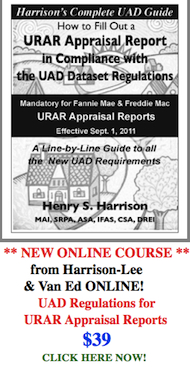News
04/25/11 Categories: News

FHFA Before the U.S. House of Representatives Subcommittee on Capital Markets, Insurance, and Government-Sponsored Enterprises
Chairman Garrett, Ranking Member Waters and members of the Subcommittee, thank you for inviting me to speak this morning on the Federal Housing Finance Agency’s (FHFA) role as conservator of Fannie Mae and Freddie Mac (the Enterprises) and on proposals regarding the future of the Enterprises...
It is critically important that Congress and the Administration begin the work to define the longterm structure of housing finance. While substantive disagreements about the features of that structure exist, there is near universal agreement that we should not follow the old paradigm. We appreciate the efforts that the Sub-committee has taken to start this process...
The Enterprises continued to provide the vast majority of liquidity to the residential housing market in 2010, guaranteeing 70 percent of single-family mortgage-backed securities issued. Mortgage origination for home purchases and refinances dropped 13 percent in 2010 from 2009, but refinance activity picked up in fourth quarter 2010 as mortgage rates remained near historic lows...
During conservatorship, the Enterprises have improved the quality of new mortgages purchased. In addition to purchasing very few non-traditional mortgages in 2010, underwriting standards continued to remain strong. In 2010, the average borrower credit score using the Fair Isaac (FICO) credit score was over 750, and the average loan-to-value ratio was below 70 percent. Serious delinquency rates on the overall credit book declined during the year after peaking at the end of the first quarter of 2010...
Loan modifications accounted for the majority of loss mitigation actions in 2010, more than tripling from the level in 2009 to 575,000 modifications in 2010...
I would like to turn now to a discussion of FHFA’s current activities as conservator. Until a new system of mortgage finance is established in the United States, mortgage finance is centered on Fannie Mae and Freddie Mac. I would like to describe some of the steps FHFA is taking to meet its statutory mission as conservator to preserve and conserve the Enterprises’ assets while ensuring the Enterprises continue to meet their statutory mandate to support a stable and liquid secondary mortgage market…
While the long-term course of housing finance is being debated and ultimately determined, FHFA meets these responsibilities by overseeing the Enterprises management of… the Enterprises’ $5.5 trillion position in the market…and limiting the costs to taxpayers.
Given the structure of the Treasury PSPAs with the Enterprises, the entity with the greatest economic interest in the Enterprises today is the taxpayer. Thus, we are preserving and conserving the assets principally for taxpayers so that they may realize the greatest possible return from these assets, whatever the final form of the companies’ transformation ends up being.
What we do know is that the single-family mortgage market in the United States is more than a $10 trillion market. The nation’s housing finance structure depends on institutions capable of absorbing the flows that a market of that magnitude generates. The coming debate will be about what those institutional arrangements look like, what degree of government support or subsidy will be involved, and what degree and role of government oversight is desired.
We do this with a clear expectation that at some time in the future Fannie Mae and Freddie Mac, as we have known them, will no longer exist. But we do not know when, or in what fashion, this will happen. Each company, in whole or in pieces, may be transformed in some fashion so that taxpayers realize value from this investment in the way lawmakers determine is in the country’s best interest.
For complete text click here: http://www.fhfa.gov/Default.aspx?Page=30
During conservatorship, the Enterprises have improved the quality of new mortgages purchased. In addition to purchasing very few non-traditional mortgages in 2010, underwriting standards continued to remain strong. In 2010, the average borrower credit score using the Fair Isaac (FICO) credit score was over 750, and the average loan-to-value ratio was below 70 percent. Serious delinquency rates on the overall credit book declined during the year after peaking at the end of the first quarter of 2010...
Loan modifications accounted for the majority of loss mitigation actions in 2010, more than tripling from the level in 2009 to 575,000 modifications in 2010...
I would like to turn now to a discussion of FHFA’s current activities as conservator. Until a new system of mortgage finance is established in the United States, mortgage finance is centered on Fannie Mae and Freddie Mac. I would like to describe some of the steps FHFA is taking to meet its statutory mission as conservator to preserve and conserve the Enterprises’ assets while ensuring the Enterprises continue to meet their statutory mandate to support a stable and liquid secondary mortgage market…
While the long-term course of housing finance is being debated and ultimately determined, FHFA meets these responsibilities by overseeing the Enterprises management of… the Enterprises’ $5.5 trillion position in the market…and limiting the costs to taxpayers.
Given the structure of the Treasury PSPAs with the Enterprises, the entity with the greatest economic interest in the Enterprises today is the taxpayer. Thus, we are preserving and conserving the assets principally for taxpayers so that they may realize the greatest possible return from these assets, whatever the final form of the companies’ transformation ends up being.
What we do know is that the single-family mortgage market in the United States is more than a $10 trillion market. The nation’s housing finance structure depends on institutions capable of absorbing the flows that a market of that magnitude generates. The coming debate will be about what those institutional arrangements look like, what degree of government support or subsidy will be involved, and what degree and role of government oversight is desired.
We do this with a clear expectation that at some time in the future Fannie Mae and Freddie Mac, as we have known them, will no longer exist. But we do not know when, or in what fashion, this will happen. Each company, in whole or in pieces, may be transformed in some fashion so that taxpayers realize value from this investment in the way lawmakers determine is in the country’s best interest.
For complete text click here: http://www.fhfa.gov/Default.aspx?Page=30






















